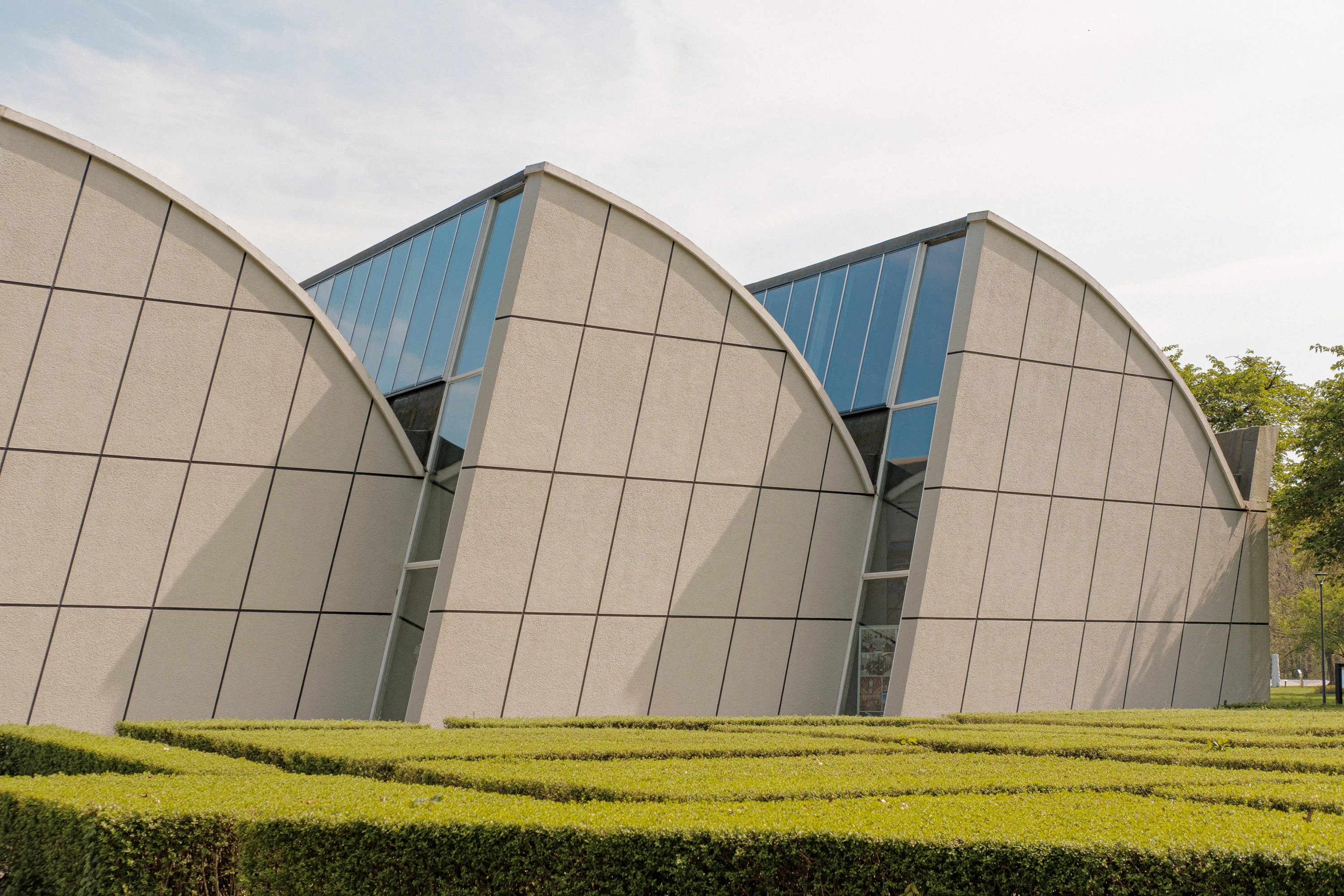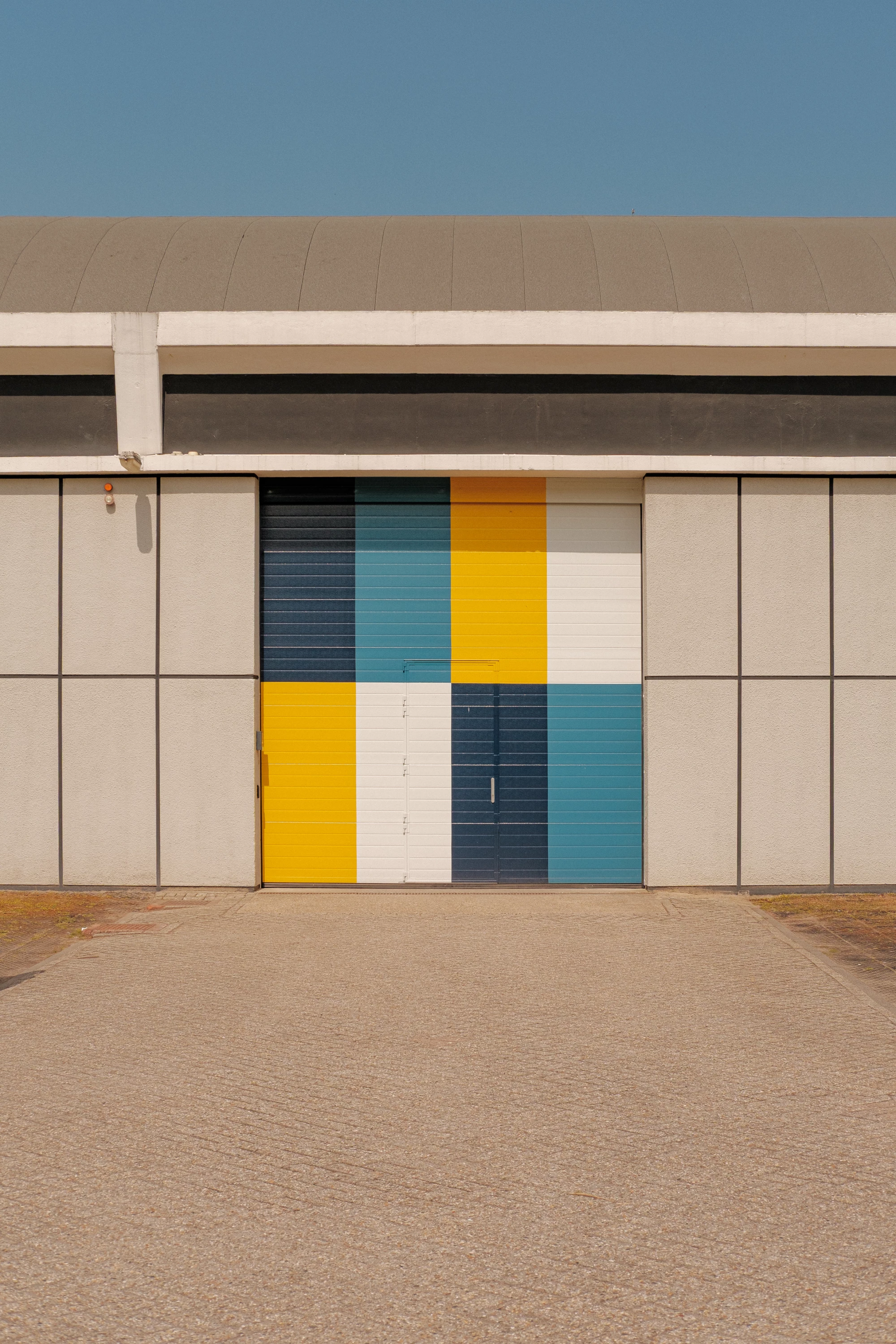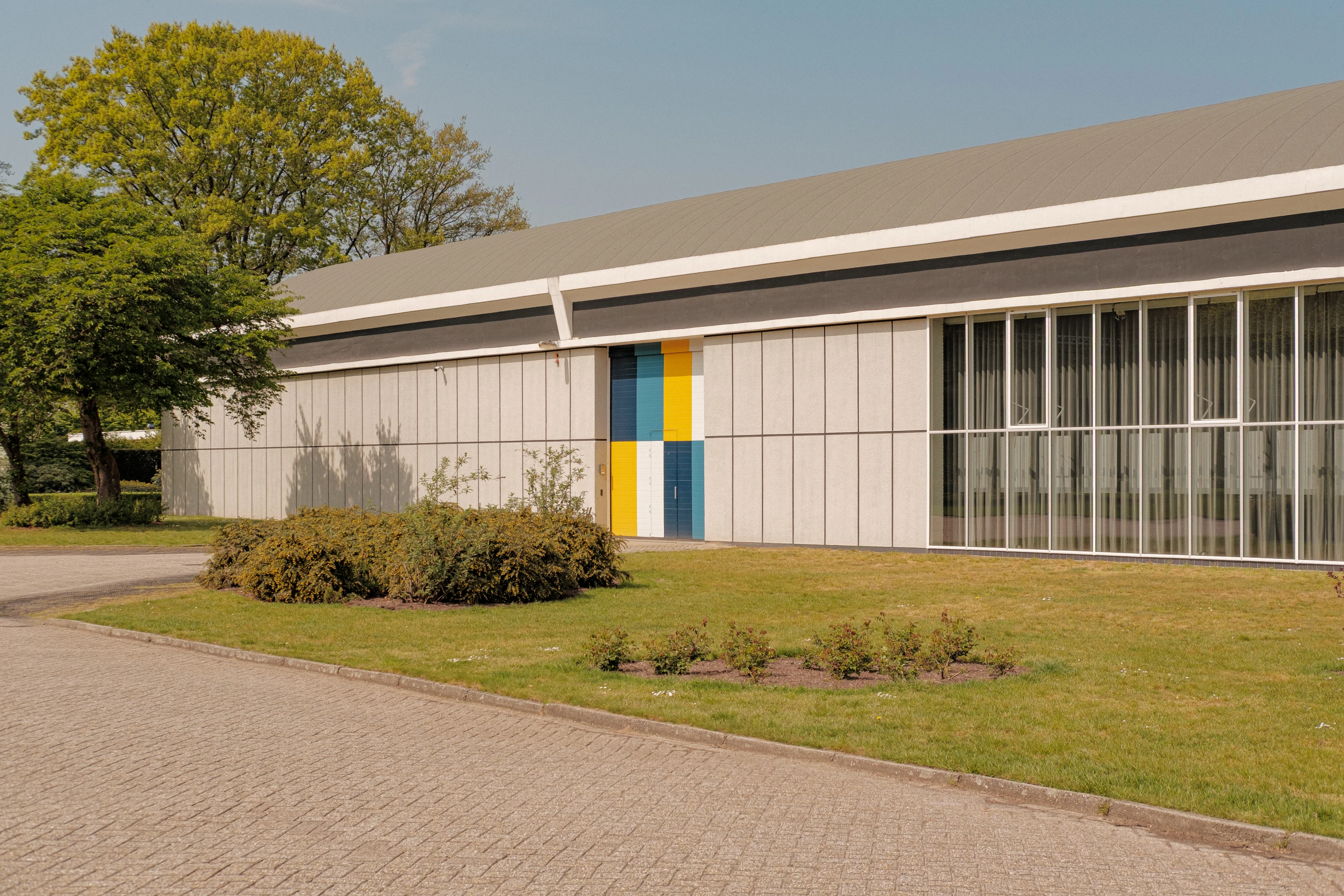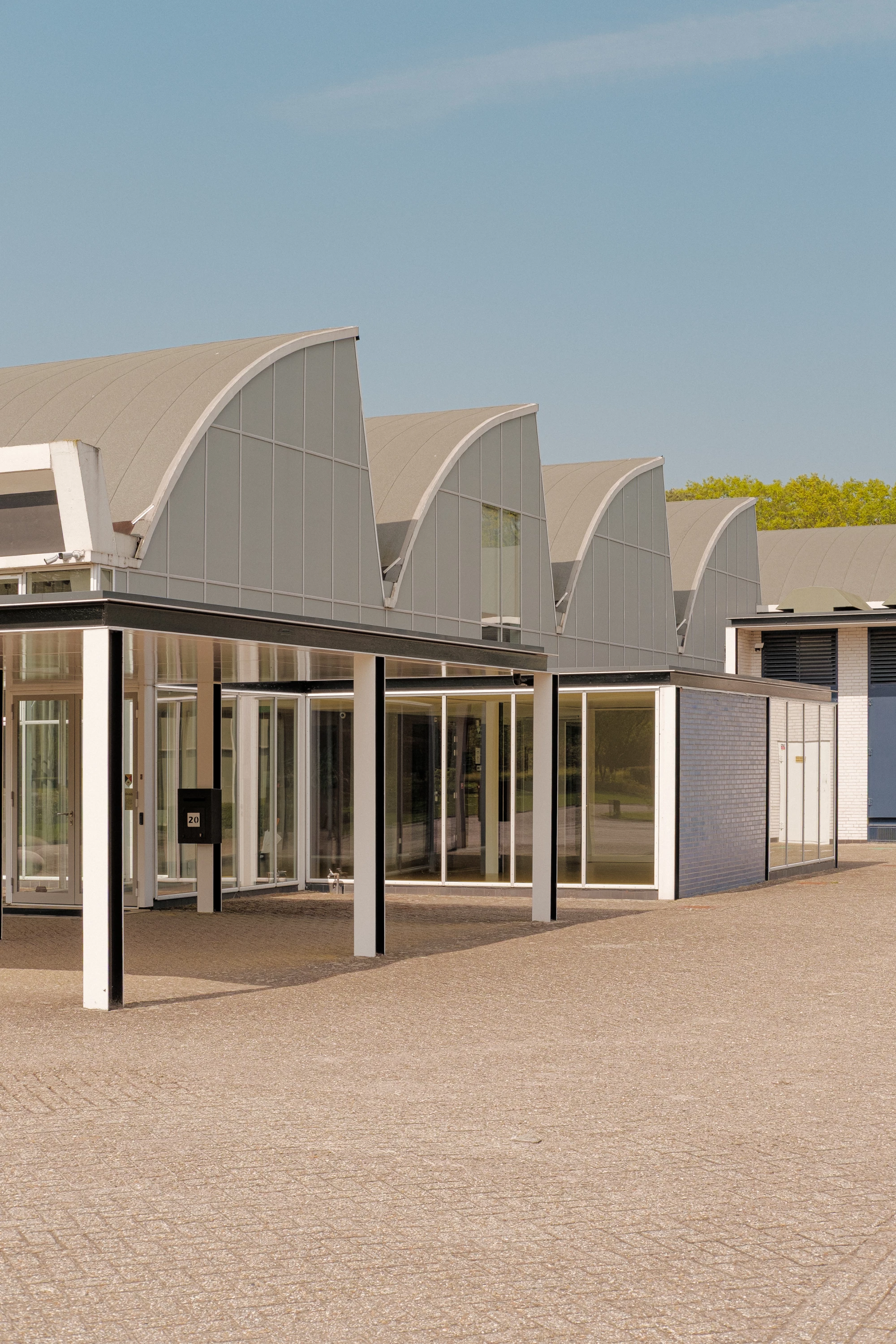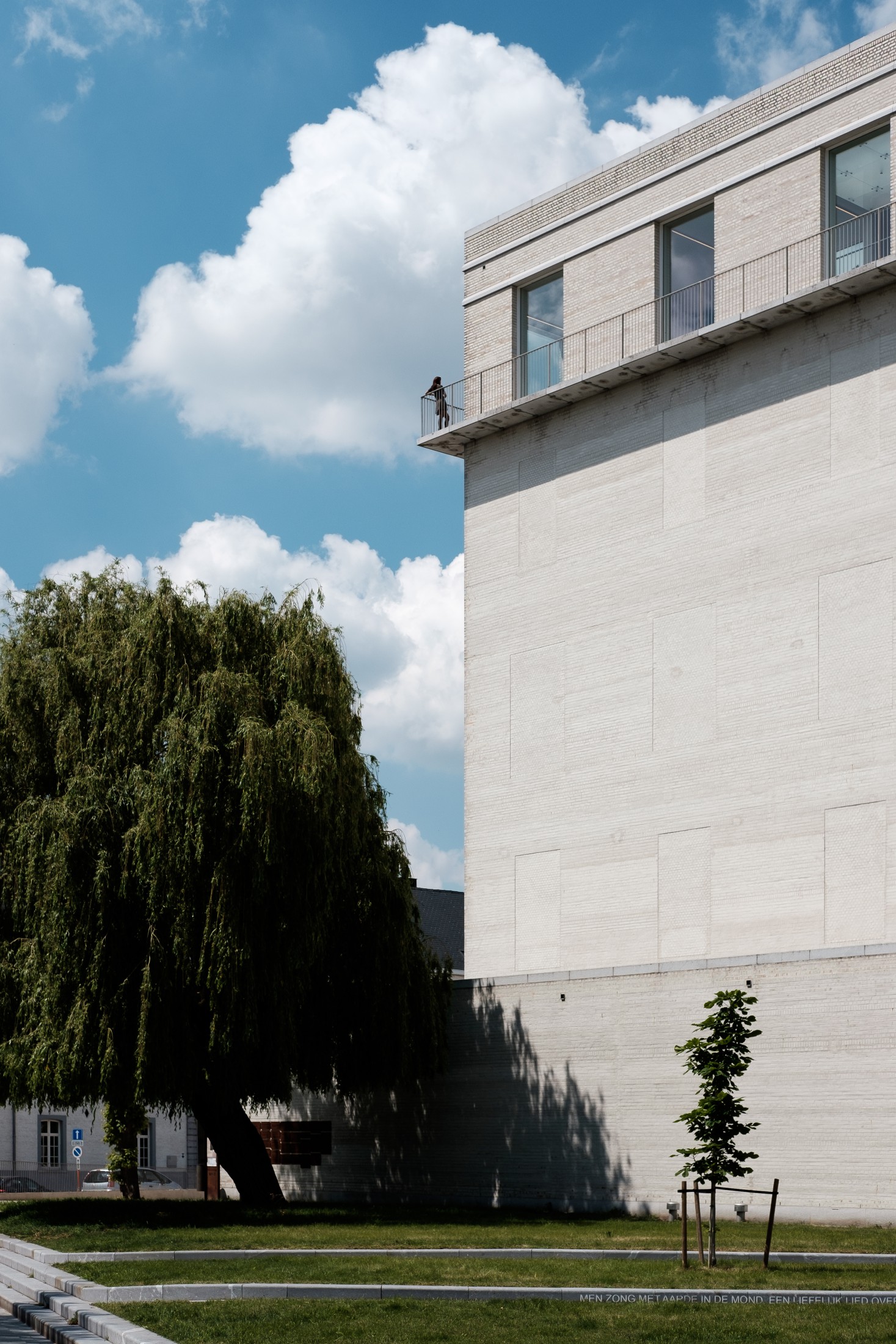De Ploeg
De Ploeg is a remarkable modernist building designed in 1957 by Dutch architect Gerrit Rietveld, located in the small town of Bergeijk in the southern Netherlands. Known for its rich design heritage, Bergeijk became something of an open-air laboratory for modern architecture during the mid-20th century, thanks in part to the involvement of Rietveld and other progressive designers. The town actively embraced design and innovation, making it an ideal setting for Rietveld’s work.
Commissioned by the textile company De Ploeg, the building was intended to serve as both an office and production hall. Rietveld, best known for his role in the De Stijl movement, created a functional, light-filled structure with a distinctive sawtooth roof. This roof design cleverly maximizes indirect natural light (perfect for the weaving work that took place inside), while reducing glare and maintaining a calm working environment.
What sets De Ploeg apart is its seamless integration into the landscape. Rietveld collaborated with landscape architect Mien Ruys to ensure that the surrounding gardens and trees became an integral part of the overall experience. The building exemplifies the ideals of the mid-20th century Dutch modernist movement: rational design, aesthetic clarity and human-centred functionality. Rietveld also designed a clock located at the entrance of the surrounding park, acting as a welcoming landmark.
Today, De Ploeg is a national monument and a celebrated example of Rietveld's architectural legacy beyond his more famous pieces of furniture, such as the Red and Blue Chair or the Rietveld Schröder House.

